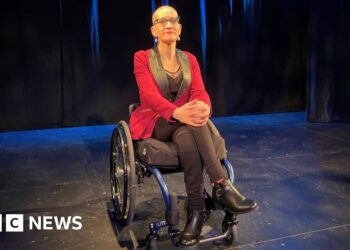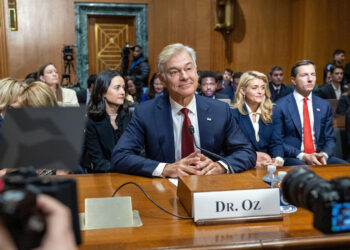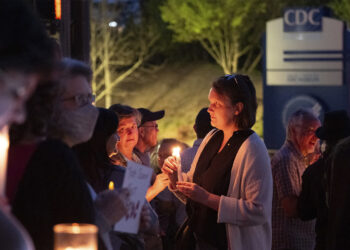As the COVID-19 pandemic in 2020 disrupted patients’ access to medical care, students at Virginia Commonwealth University (VCU), Richmond, Virginia, began to reach out to people in need of dermatology care by establishing a new monthly program at nonprofit Crossover Health Ministry’s clinic in Richmond, Virginia.
The screenings provided through the program are done by attendings and residents, but medical students participate in clinical care by collecting histories and handling preliminary examinations, for example. The students lead management of the clinic in terms of tasks such as scheduling.
Kimberly S. Salkey, MD, an associate professor and residency program director for the Department of Dermatology at VCU School of Medicine, Richmond, Virginia, said she considers it a point of pride that the clinic continued to run even after the initial founders graduated, with students keeping operations running.
“They have really done a lovely job of forming a nice structure,” Salkey said. “So there is a formalized handover with leadership. There’s a process by which the next set of students to lead the clinic are selected and a formal onboarding process.”

For students like Falen Mehari, Kamelia Zolfaghari, and Divya Shan, who are the clinic’s current leaders, this program is an opportunity to begin coordination of team members. They get a taste of what future management tasks might be like. Student volunteers participate in the Derm Free Clinic as a chance to provide community service and to get early experience of clinical practice. Some start as early as their first year.
“It’s really an opportunity for med students, especially M1s, who don’t have a lot of opportunity in clinical spaces to sort of get their feet wet, to practice interviewing patients,” Mehari said.
Zolfaghari said her experience as a volunteer in the free clinic led her to apply for dermatology residencies.
“This definitely helped foster my interest throughout medical school, especially because it’s a repetitive monthly clinic,” she said. “So you have that continued exposure and that continued opportunity to practice those skills.”
The VCU program is a part of what appears to be a growing number of student-run medical clinics.
The number of these clinics appears to have more than doubled from 2005 to 2014, and then nearly doubled again by 2024 to almost 400 clinics in 39 states and 11 countries, wrote Nicholas Peoples, MSc, MA, and Peter A. Ubel, MD, in a November Viewpoint article in JAMA Internal Medicine.

These estimates are somewhat fluid because it is difficult and labor-intensive to do national surveys, Peoples told Medscape Medical News. He said only two have been published, in 2007 and 2014, and neither had 100% response rates. Without a national registry or database, the growth of these clinics has so far outpaced the ability to accurately track them, Peoples said.
The unifying factor of these programs is one shared with free clinics in general.
Patients don’t choose to be seen at student-run clinics as much as they end up seeking care there for lack of choices, Peoples and Ubel noted in their Viewpoint.
“That’s something we have to keep in mind,” Peoples told Medscape Medical News in an interview. “We’re oftentimes just the only game in town for people without access to other care. Just because that’s the case doesn’t mean that we’re doing a good job. We have to actually still take the necessary steps to ensure that we are.”
Promise, Pitfalls
Peoples is an advocate for student-run free clinics. He served as co-director of the student-run HOMES Clinic in Houston, which is part of a federally qualified health center Healthcare for the Homeless-Houston. He also is an editor and longtime peer-reviewer at the Journal of Student-Run Clinics.
These experiences have helped him see the pitfalls as well as the promise of student-run free clinics. People said that, for example, as an editor, he has seen papers describing research on human participants conducted at a student-run clinic without institutional review board approval.
Peoples and his coauthor noted this in their JAMA Internal Medicine article, along with other concerning issues:
- A clinic that mismanaged donations when the director of finance (a medical student with no relevant finance background) opened a checking account without knowing what the minimum account balance was. As a result, monthly service fees drained the account, resulting in overdraft charges.
- Many student-run clinics are not integrated into the electronic medical records of their host institution. That’s led to cases of ad hoc documentation in ways that are not Health Insurance Portability and Accountability Act–compliant, including creating, storing, and transmitting medical records and protected health information on Microsoft Word on personal laptops.
- Most student-run clinics have not published data, making it difficult to evaluate how well they serve patients.
The data that do exist are limited and often flawed, Peoples said. A 2022 review found most existing studies about patient outcomes at student-run clinics are inadequately powered, use retrospective or cross-sectional designs and convenience sampling, describe a limited scope of outcomes, may reflect publication bias, and are not generalizable.
In their Viewpoint, Peoples and Ubel called for a “national conversation” about student-run free clinics (SRCs), with the goal of creating “a mandatory annual national survey and data registry.” They cited the SHARING clinics of the University of Nebraska Medical Center as a good model for these efforts. These clinics developedan Epic-linked database that can track metrics in real time.
“We believe in the SRC model, its positive effect on students, and its potential for bringing healthcare to those who need it most,” Peoples and Ubel wrote.
“Simultaneously, running a free clinic entails challenges that medical students alone are not fully equipped to manage. If we can provide more consistent support to motivated student leaders and better measure patient outcomes, we can then empower SRCs to reach their full potential while practicing with the requisite humility to first do no harm.”
“Volunteers are a part of the process. It’s good to know if they’re getting something out of it, but that shouldn’t be the first thing, And, that shouldn’t be the most studied thing” about student-run free clinics,” Peoples said. “We have to think about the patients first. And on that front, we still have a lot of work to do.”
‘Patient First’
In an interview, Ellen Beck, MD, the founding director and advisor for the Student-Run Free Clinic project at the University of San Diego said Peoples and Ubel highlighted some important concerns.
“The focus always has to be the patient first,” Beck said. “For all of us
involved in healthcare, the quality care of the patient has to be the first priority.”
Beck said training and close monitoring are essential in delivering high-quality medical
care in these student-managed, student-inspired clinics. At the UCSD clinics, for example, student volunteers must receive training before they can participate, she said.
“They can’t just show up once or twice,” Beck said. “Our students take extensive
courses that the faculty and community members teach, to learn, not only about the
clinical aspects, but the human aspects, the social determinants of health, mental
health and well-being, the legal aspects of the clinic, our philosophy of care, and what
we can do and what we can’t do.”
With these kinds of guardrails in place, student volunteers can help by taking on key
roles to address the needs of people with no other options for medical care, she said.
“They devote themselves to the high-quality care of the patient, taking on whatever
roles are needed, as they learn compassion, humility, and self-awareness, a true,
person-centered approach to leadership – key qualities needed in healthcare today,” Beck said.
Student roles can include:
- With direct supervision, participating in clinical care
- Ensuring patients get the lab tests ordered for them as well as the needed
- Specialty and social services
- Developing and implementing policies and procedures
- Managing patient flow
- Ensuring excellent patient follow-up and continuity of care
- Helping with fund-raising
- Modeling the core philosophy of a transdisciplinary approach to patient empowerment
- Where the patient and community are the teachers
“Of course, they are still students, and thus all activities, both in management and patient care have to be supervised and all final decision-making will be made by the
clinic faculty leadership,” said Beck, who is a clinical professor emerita in the
Department of Family Medicine, UC San Diego School of Medicine and School of Public
Health.
‘The Mutual Inspiration Society’
Beck described the UCSD Student-Run Free Clinic Project as a “a setting of
mutual inspiration,” or “the Mutual Inspiration Society.”
“Many of the best things we have done at the clinic have been inspired by the students.
The students saw an unmet need and approached us, and we worked together to make
things happen,” Beck said.
For example, students inspired the creation of a dental clinic, a partnership with the
UCSD School of Pharmacy, expanded mental health and integrative medicine services,
access to legal services, and a program to provide “culturally humble” nutrition
education and healthy bags of food to patients at medical visits.
Often students help patients address barriers to medical care. For example, a UCSD
student volunteer spent a summer working to make sure a patient seen at the clinic could get a critical surgery, Beck said. Student volunteers learn to try to find pathways to care for the patients seen at free clinics, especially by working in collaboration with team members.
“We are there to serve people, with respect and kindness, who are falling through the
cracks, recognizing that as a society, we are underserving huge segments of our
population.” Beck said. “Students arrive at medical school with passion, compassion,
and a desire to make a difference, and we help keep that alive.”
Kerry Dooley Young is a freelance journalist based in Washington, DC. Follow her on LinkedIn and Threads.
Source link : https://www.medscape.com/viewarticle/student-run-clinics-seen-expanding-offering-promise-and-2025a100008r?src=rss
Author :
Publish date : 2025-01-07 09:29:03
Copyright for syndicated content belongs to the linked Source.














